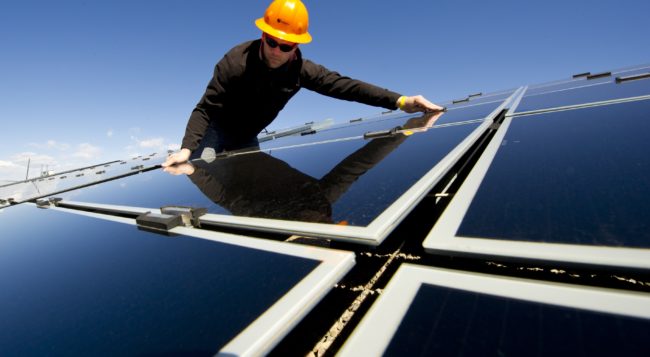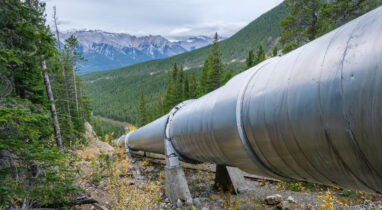The federal government is rightly focussed on helping Canadians through the COVID-19 crisis. But as people’s immediate needs are met and attention turns to helping the economy recover, we must keep another imminent crisis – the crisis of climate change – top of mind. Climate change is a threat multiplier that endangers our health, wealth, and way of life.
Fortunately, there are a variety of ways to stimulate the economy and address climate change. As the federal government (and provincial governments) contemplate stimulus options, it’s critical to keep in mind that we are in the midst of a long-term transition, both in Canada and globally, towards a lower-carbon economy, where products produced with less carbon will have a competitive advantage. The government would therefore be wise to use the economic recovery to help accelerate the transition to a lower-carbon economy, focusing support on Canadian businesses that are positioned to take advantage of a cleantech market which is estimated to be worth USD $26 trillion over the next decade.
In particular, we encourage the government to heed the following principles as they design a green stimulus:
1. Invest in workers and think long-term: Many people have lost their jobs or seen their income reduced. Supporting Canadian workers is critical, and the best way to support workers for the long-term cannot be focused only on providing relief to their existing employers and industries. For some workers, education and retraining programs to prepare them for jobs in the low-carbon economy might provide more enduring support, especially for Canadians working in industries that are facing more significant structural challenges. Government should also prioritize investing in projects that are labour intensive and will create significant numbers of new jobs.
2. Prioritize support to businesses that can accelerate our low-carbon transition: Canada has a rapidly growing clean technology sector that spans the entire country, from clean energy producers to electric vehicle manufacturers to industrial producers that have lowered the carbon footprint of products like cement and aluminum. The clean energy sector alone is expected to grow by 50% over the next decade. Public funds should prioritize businesses such as these that will help us accelerate our transition to a low-carbon economy, generating more jobs and further growth in the process. In contrast, industries facing structural headwinds unrelated to COVID-19 may be in the same position post-bailout unless they are incentivized to respond to the transition to a lower-carbon economy.
3. Require high-carbon sectors to reduce emissions and increase competitiveness: Government funding should flow to companies – and jobs – that will continue to thrive in a world where carbon is constrained and priced. Companies in high-emitting industries, which are already at risk in this new economy, should be required to commit to reducing their emissions intensity (carbon emitted per unit of output) within a reasonable timeframe if they want government assistance. This will not only help reduce carbon pollution but also increase competitiveness in an economy where carbon will be priced, and higher carbon products will be disadvantaged.
The oil and gas industry is a good example of a sector where such a policy would be appropriate. Companies seeking government support should agree to ambitious but achievable emissions intensity targets as a condition of public support. The oil and gas sector has already reduced its emissions intensity significantly in the last decade. Commitments to further reductions will help catalyze innovation needed to compete in tomorrow’s economy. We know such commitments are possible, as there are already oilsands projects with emissions intensity below the US average, and commitments have been made by several major Canadian producers to significantly reduce emissions over the next decade.
4. Prioritize low-cost investments: As clean growth spending options are considered, the government should evaluate projects on a cost-per-tonne basis and then prioritize projects that are lower-cost over those that are relatively higher cost. For example, subsidy programs tend to be particularly expensive because a significant share of the money goes to ‘free-riders,” people who would have acted even without the subsidy. While cost may not be an immediate concern for government or the public, we need to remove hundreds of millions of tonnes of carbon annually from our economy over the next decade. Choices that cost us $100 per tonne or more could translate into spending tens of billions of dollars annually that could be used for other purposes.
5. Focus on areas suited to government action: Clean Prosperity believes the government should address problems of pollution, such as climate change, by establishing the right incentives and then allowing the private sector to figure out how best to comply. That’s among the reasons why we prefer carbon pricing to reduce our emissions – it gives individuals and businesses the freedom to respond in a way that best suits them, rather than having the government choose. But today’s circumstances are unusual – the government will be spending money to stimulate the economy and looking to direct some of those dollars to address climate change. In this circumstance, it’s important for the government to focus spending in areas where there is a clear rationale for public intervention (e.g. market failures, public goods). In the current context, some areas that stand out as good uses of public money include: retraining programs for displaced workers, funds to communities for a “just transition,” early-stage research on new clean technologies, public infrastructure projects (e.g. public transit), and investment support for projects that have high emissions reduction potential but are not yet commercially viable without public support.
For more information, please contact Clean Prosperity.



